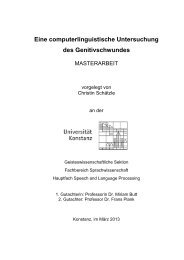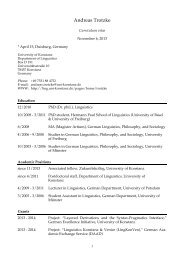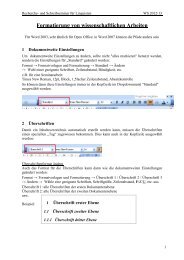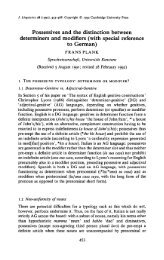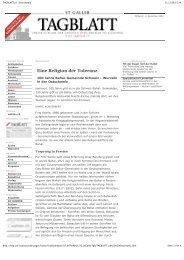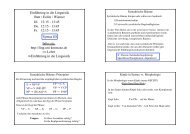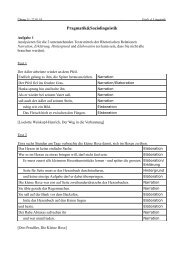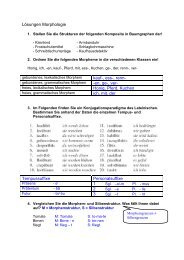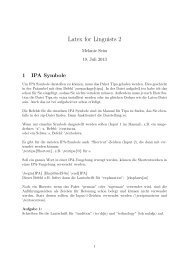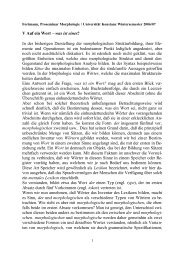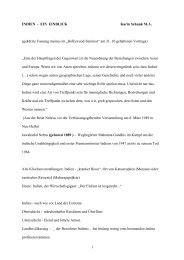5. Morphology in Relation to Phonology
5. Morphology in Relation to Phonology
5. Morphology in Relation to Phonology
You also want an ePaper? Increase the reach of your titles
YUMPU automatically turns print PDFs into web optimized ePapers that Google loves.
F. Plank, <strong>Morphology</strong> I: <strong>5.</strong> <strong>Morphology</strong> <strong>in</strong> <strong>Relation</strong> <strong>to</strong> <strong>Phonology</strong> 9<br />
In the <strong>in</strong>terest of easy pronounceability certa<strong>in</strong> phonological rules, of a<br />
k<strong>in</strong>d found <strong>in</strong> many languages (assimilation, cluster reduction), happen<br />
<strong>to</strong> affect the <strong>in</strong>flectional exponent -(e)n of adjectives and nouns so<br />
severely that no separate segment rema<strong>in</strong>s and the <strong>in</strong>flection merges<br />
with the stem: the morpheme boundary is hidden with<strong>in</strong> a s<strong>in</strong>gle<br />
segment and the construction thus becomes opaque.<br />
With morphology almost wholly obliterated by reductive phonology,<br />
words already <strong>in</strong>flected once are <strong>in</strong>flected a second time, <strong>to</strong> render the<br />
morphological construction aga<strong>in</strong> transparent.



